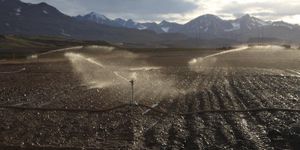Could willow trees filter wastewater and untreated sewage?
A new study published in the journal Science of the Total Environment demonstrates the potential of willow tree roots to act as a bio-refinery that filters wastewater and untreated sewage. It is estimated that Canada releases six trillion liters of municipal wastewater and 150 billion liters of untreated sewage directly into surface waters and surrounding environments every year. Could willow trees offer a solution?
"We're still learning how these trees can tolerate and treat such high volumes of wastewater, but willows' complex 'phyto'-chemical toolkit is giving us exciting clues," said lead study author Eszter Sas from Université de Montréal.
Sas and colleagues have experimented with the refinery capabilities of willow tree roots at a wastewater plant in Quebec. They say the willows’ roots filter out the high levels of nitrogen found in sewage, estimating that it is possible to refine more than 30 million liters of primary wastewater per hectare annually.
Just as motivating is the finding that filtration by willow roots triples the biomass produced in wastewater systems. The resulting biomass can be harvested for renewable lignocellulosic biofuels, offering a green chemical yield that is economically competitive to fossil fuels.
"One of the benefits of using natural solutions to address environmental challenges like wastewater treatment is that we can generate complementary bioproducts, such as renewable bioenergy and green chemistry," said senior author Frédéric Pitre. "This concept of a biorefinery seems to be fantastic in allowing new environmental technologies to compete economically with the highly established markets of petroleum-based fossil fuels and chemicals while also helping to reduce ongoing human damage to the ecosystem."
“It's amazing how much novel plant chemistry there is still to be discovered, even in willow trees, which have been around for thousands of years," Sas noted. "It seems likely that we're still only scratching the surface of these trees' natural chemical complexity, which could be harnessed to tackle environmental problems," she concludes.








